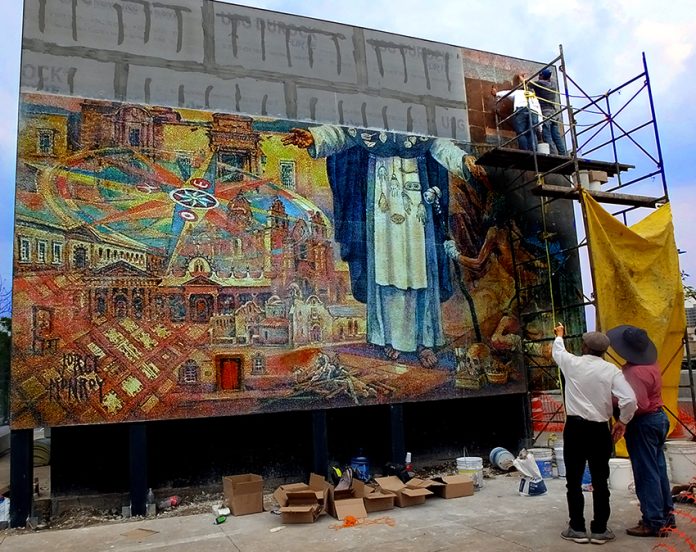Guadalajara painter Jorge Monroy’s last two murals depicted the city’s most beloved public figure, Fray Antonio Alcalde. So guess who the subject of Monroy’s most recent mural is?
Once again it’s the ever-popular Alcalde, but this portrait of the venerable bishop, Monroy’s first outdoor mosaic, is a bit different.
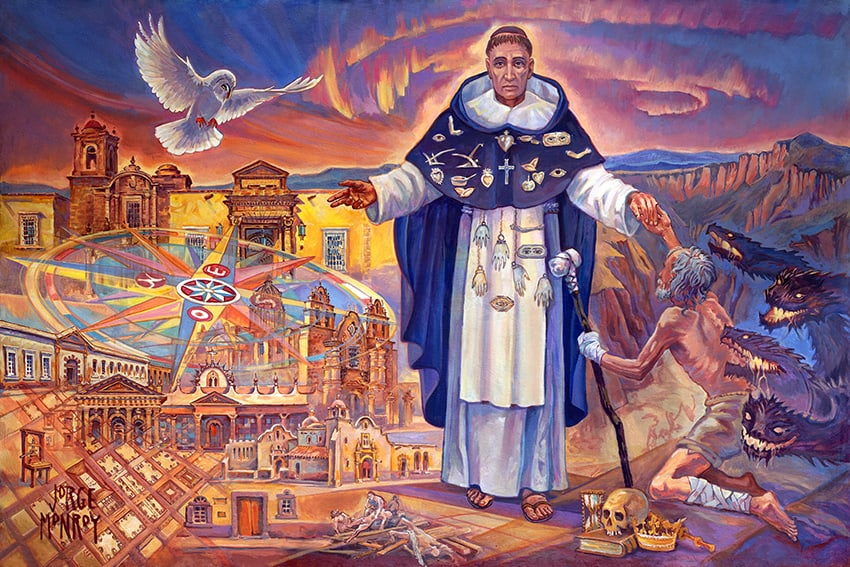
“It’s not really my Alcalde,” says Monroy, who first gained local fame for his watercolor landscapes. “I think this is the first attempt ever to render Fray Antonio as the celebrated novelist Agustín Yáñez wanted him to appear.”
The mosaic — which measures 20 by 30 feet — now proudly dominates an important intersection of the city at the north end of Paseo Alcalde, a 23-block-long public walkway where grandparents, kids and teens can stroll about in the tradition of Mexican pueblitos.
The mosaic literally gives Fray Alcalde a new face.
“No one really knows what Alcalde looked like,” Monroy told me in his mountaintop studio just west of Guadalajara.
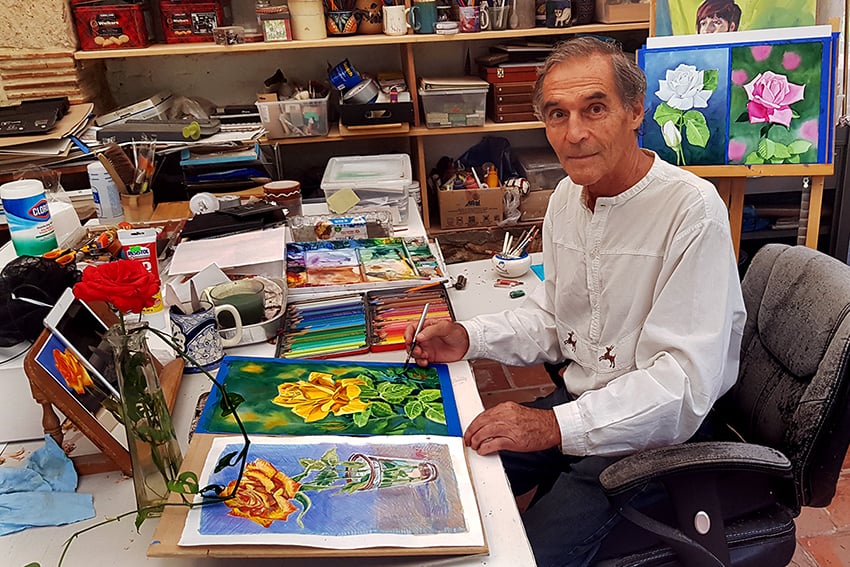
“We painters would just make up a face, but in this case I had access to the friar’s death mask, so I think this is a realistic rendition.”
Born in Spain in 1701, Antonio Alcalde arrived in Mexico in 1763 after being appointed Bishop of Yucatán. He became Bishop of Guadalajara in 1771, serving in this position until his death in 1792. Alcalde is fondly remembered in Guadalajara for the many public works he sponsored as the city’s bishop, including churches, a hospital and the forerunner institution to today’s University of Guadalajara.
Monroy’s mural is based on the written instructions of Agustín Yáñez, one of Jalisco’s most famous sons and a curious combination of writer and politician. Yáñez served as the state’s governor from 1953 to 1959 and is one of Jalisco’s best known contributors to Spanish-language literature, particularly for his 1947 novel “Al filo del agua” (published in English as “On the Edge of the Storm”).
Monroy told me it was easy to follow Yáñez’ guidelines because his colorful instructions instantly suggest images.
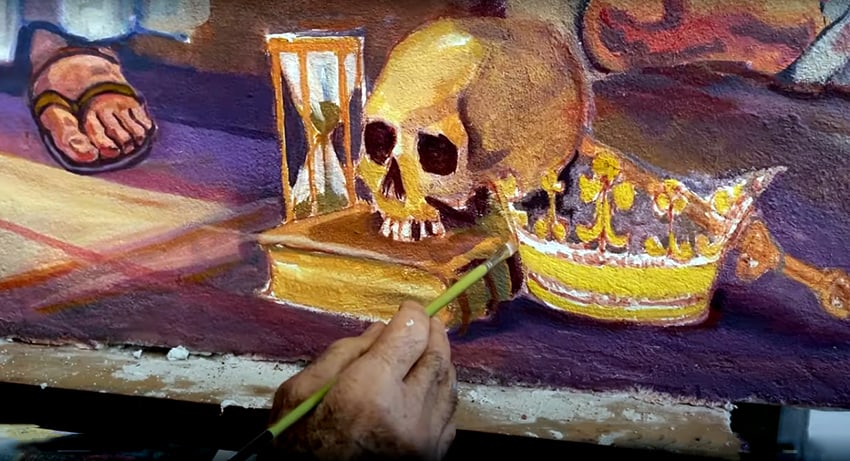
“Fray Antonio should be a colossal figure in the painting, dominating it,” says Yáñez, so Monroy has painted him nearly six meters tall.
On the friar’s right, Yáñez wants us to see the prelate’s religious and civil works while on his left he is seen rescuing a victim of life’s hardships from the jaws of a four-headed dragon, whose heads represent plague, death, hunger and war.
Laid out on the friar’s Dominican habit like the medals of a decorated soldier, Yáñez asks for a variety of ex-votos, the symbols of gratitude that the devout hang on chapel walls to indicate that their prayers have been granted.
Just above the friar, serving as his halo, we have the aurora borealis itself, illuminating the sky, while at the figure’s feet Yáñez requests “a vale of tears.” Here Monroy has decided to paint a scene from one of the most infamous nautical catastrophes of all time: the disastrous shipwreck of the French frigate Medusa, which occurred in 1816, 24 years after Alcalde’s death.
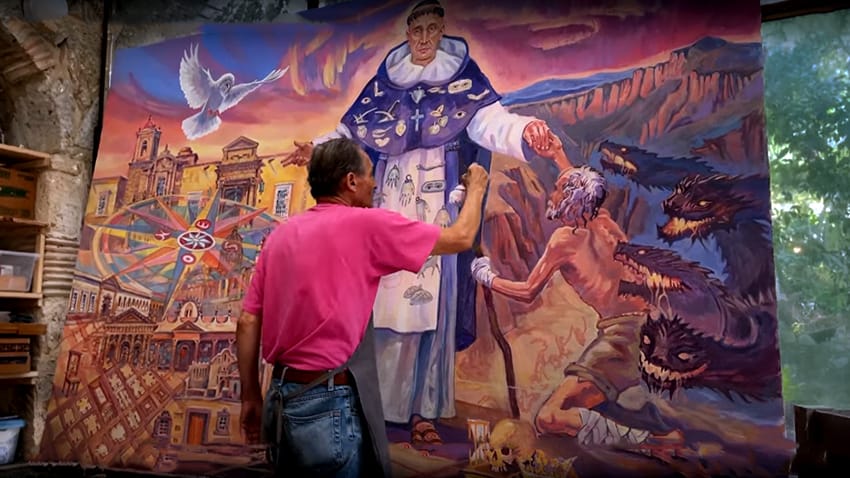
Curiously, in the aurora-filled sky, Yáñez writes that there should fly “a dove with the head of an owl,” an image which Monroy turns into an ethereal, fantastical creature on which Yáñez makes no further comment.
Directly underneath this beautiful bird we see Alcalde’s great works: first his Civil Hospital and then all sorts of public works: the Belén Cemetery, the University of Guadalajara, a college and sanctuary for women called the Beaterio, several churches and even the city’s first printing press.
In the bottom left corner we see Las Cuadritas, said to be the first public housing compound built on the American continent. Many of these 500 houses served as places where outpatients of the hospital could convalesce. Others were rented to raise money for the hospital.
Yáñez wanted it to be abundantly clear that Alcalde built his public works on the north side of the city, so Monroy has obligingly superimposed an elaborate Compass Rose as one might find on an ancient map.
The love, admiration and gratitude Guadalajarans feel toward Fray Antonio can be understood when one considers the epidemics that plagued the city in the 1700s. One year it was typhus, then a few years later smallpox, then typhus came back, once again followed by smallpox.
“In 1780 the city was decimated,” says epidemic historian Lilia V. Oliver, “and the plagues of 1784-1786 were made a thousand times worse because a violent hailstorm wiped out all the crops. In fact the year 1786 is on record as ‘the Year of Hunger.’ … It was a concert of calamities and the man who found himself with the baton in his hand was none other than the Bishop, Fray Antonio Alcalde.”
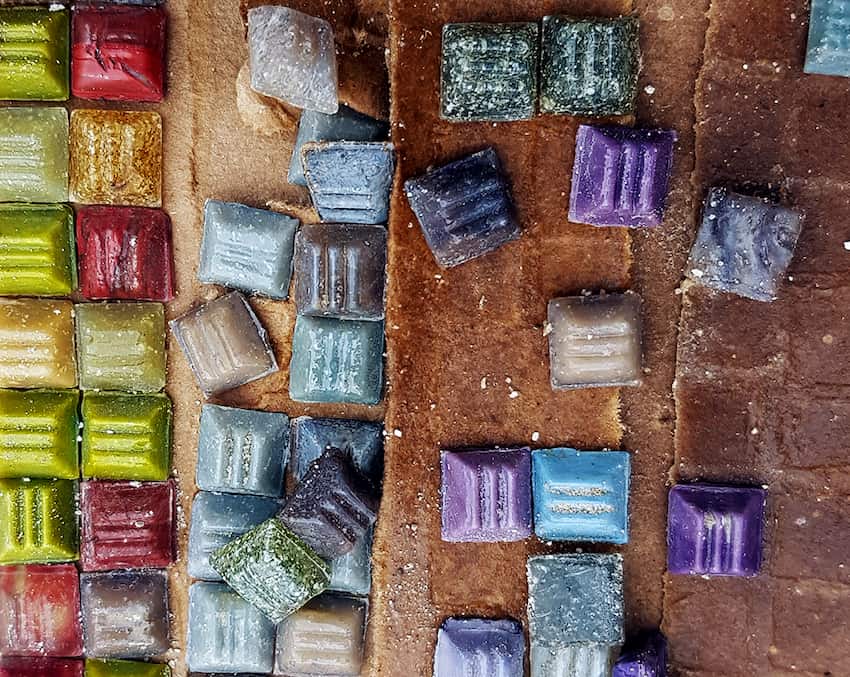
In the 18th century, the city had only one hospital with about 30 beds, so Alcalde built the Hospital Civil with 800 beds which were later expanded to 1,000. Trying to alleviate the problems caused by so many plagues, he built the Belén Cemetery and the Cuadritas public housing project.
Following the outline of Augustín Yáñez, Jorge Monroy created an acrylic painting measuring six by ten feet. The canvas was then placed in the hands of architect Sergio Hernández Madera who transformed it into a beautiful weather-resistant tile mosaic, which was unveiled on Aug. 7 before the governor of Jalisco and numerous other dignitaries. A vivid depiction of the mural’s creation, from preliminary watercolors to the installation of the final work, can be seen in a short video by Karen Colón.
“So what will be your next mural?” I asked Jorge Monroy after the ceremony.
“Believe it or not, it will be all about teeth,” replied the painter with an enigmatic smile. “The University of Guadalajara School of Odontology wants a mural for their building and I am already delving into the bizarre and surprisingly ancient history of dentistry… and I think for many, my next mural will be a real jaw-dropper.”
The writer has lived near Guadalajara, Jalisco, since 1985. His most recent book is Outdoors in Western Mexico, Volume Three. More of his writing can be found on his blog.
